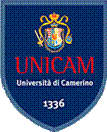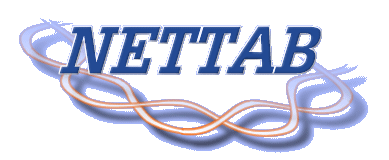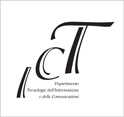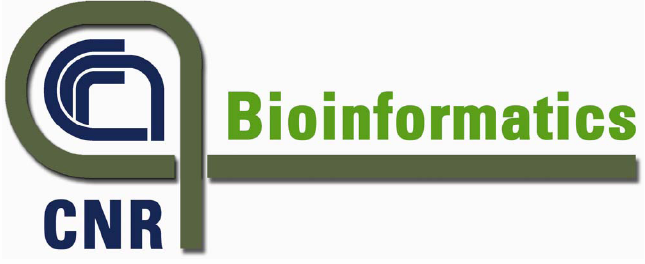
|

|

|

|

|

|

|
NETTAB 2007 focused on: A Semantic Web for Bioinformatics: Goals, Tools, Systems, Applications June 12-15, 2007, University of Pisa, Italy |
||||
Overview
The Call for papers is closed.
The NETTAB 2007 workshop is focused on the Semantic Web and its
possible use in support to Bioinformatics.
Please note however that, starting from this edition, NETTAB workshops
will also include special sessions devoted both to the general
theme of the series of workshops, i.e. "Network Tools and Applications
in Biology", and on further topics selected by local organizers.
This year, you are therefore welcome to submit your work on
any of the followings topics:
- Main focus theme: Semantic Web applications in bioinformatics
- Adjunct focus themes: Algorithms in bioinformatics and Formal Methods for Systems Biology (see below for goals and topics)
- General theme: Network Tools and Applications in Bioinformatics
The workshop is organized in sessions and open discussions. In the main focus sessions, invited speakers will present the state of art of the session's topic, while a number of submissions will be accepted for oral presentations and posters on all topics.
NETTAB 2007 Call for Papers
Rationale for the Main Focus Sessions
Biological information is increasing at an impressive rate. An integrated access to this huge amount of information requires complex searching and retrieval software. In particular, the integration activity is concerned with how to link data, how to select and extract information and how to pipe retrieval and analysis steps. This automated approach requires the adoption of new technologies and tools and their applications in the bioinformatics domain.
Some reference points have already been assessed or are emerging: the adoption of XML schemas for information models' specification, the definition of XML based languages for data representation and exchange, the implementation of Web Services for automated access to analysis tools and dat , the creation of computerised pipelines and workflows for the definition and the execution of basic and complex analysis. Workflow enactment portals can bring added value, allowing also non expert researchers to have analysis automation at their disposal.
However, while these first steps towards data integration and processes automation have been made, little has been made for supporting semantic integration. What we need are shared definitions of knowledge domains, i.e. ontologies, association of biological concepts to existing data, metadata information describing information sources and search tools able to make the best use of this additional information.
The definition of ontologies and their application to software and database tools may be seen as a first, needed attempt to organize the information, overcoming heterogeneity of data structures. But the problem of associating the information sources and the huge amount of data with concepts defined in these ontologies is a big one. The addition of semantic contents in current databases would give an essential contribution to the best integration of distributed biological information.
The development of metadata for biological information, on the basis of Semantic Web standards, and its definition for all information sources can also be seen as a promising approach for a semantic based integration of biological information. Text mining is of a fundamental importance since literature still is the most relevant information source in biomedical research. It is the most clear example of an unstructured information source whose content should be integrated with structured data in order to be fully exploited.
Goals
This workshop aims at getting together biologists, bioinformaticians, computer scientists and linguists to try to answer the following questions:
- Is the Semantic Web of some use for Bioinformatics?
- Which goals should have a Semantic Web for Bioinformatics?
- Which standards, technologies and tools of the Semantic Web can most profitably be used in Bioinformatics?
- Which application did the Semantic Web already find in Bioinformatics?
- Which current Bioinformatics research problems can be solved by the Semantic Web?
- Which are the short, medium and long term perspectives in applying Semantic Web technologies to Bionformatics?
The workshop also intends to:
- introduce the basic knowledge of related standards and technologies, in a non trivial way through invited lectures and tutorials
- outline the promising features of the Semantic Web in bioinformatics through invited lectures and open discussion
- show some valuable examples in bioinformatics through invited lectures, oral communications and posters
- support as much discussion as possible through open discussions and a panel discussion
- practically demonstrate "how it works" through tutorials
Topics
Focus topics of the NETTAB 2007 workshop will be all technical and
organizational issues related to the Semantic Web for bioinformatics,
including standards, technologies, tools, applications, examples
of use, advantages and drawbacks and perspectives.
The following list is not meant to be exclusive of any further
topics as stated above.
Submitted contributions should address one or more of the following topics:
- Focus theme topics
- Goals:
- Roles and uses of ontologies in knowledge discovery, text analysis and data mining
- Expected results of adoption of Semantic Web tools in Bioinformatics
- Standards, Technologies, Tools:
- Semantic Web standards (RDF, OWL, .)
- RDF Schemas and Query systems
- Biomedical Ontologies and related tools
- Formal approaches to large biomedical controlled terminologies and vocabularies
- Systems:
- RDF repositories and query systems for life sciences
- Semantically aware biomedical Web Services
- Semantic Biological Data Integration Systems
- Existing and perspective applications:
- Case studies, use cases, and scenarios
- Semantic Web applications in life sciences
- Goals:
- General topics
- Network Standards, Technologies, Tools, Applications in Bioinformatics
- Network Standards, Technologies, Tools, Applications in Bioinformatics
Goals and Topics of adjunct focus themes
Algorithms in Bioinformatics
Goals
The Algorithms in Bioinformatics sub-focus seeks for contributions on
discrete algorithms addressing relevant problems in molecular biology.
The attention is on algorithmic and combinatorial approaches leading
to computationally efficient and theoretically sound methods that find
application on biological problems.
We are interested in original results, including work in progress,
exploration of future research directions, and surveys of relevant areas
that are missing in the literature.
Topics
- Discrete algorithms for sequence analysis, (functional) genomics, gene and signal recognition, alignments, molecular evolution, structure determination or prediction, gene expression and gene networks, proteomics, and drug design
- Development of methods and tools from these algorithms and their underlying models
Formal Methods for Systems Biology
Goals
The Formal Methods for Systems Biology sub-focus is aimed at collecting contributions concerning the development of new formal methods -or the application of existing formal methods- to describe behavior and properties of biological systems. Particular interest is placed on the formal description of the minimal requirements for a biological viable organism, and on the formalization of complete self-sustaining biological cells.
Topics
- Formal Methods for modeling biological processes, networks and metabolic activities
- Prediction of biological systems behavior and inference of emerging properties
- Minimum life and Virtual Cells
Type of contributions
Exact types of contributions and related authors' instructions will be available on the official launch of the Call. Presently, the following possible contributions are sought:
- Tutorials
- Oral communications
- Posters
- Position papers
- Software demos
Selected papers will also be published in a Special Issue of BioMed Central's BMC Bioinformatics (see http://www.biomedcentral.com/bmcbioinformatics/) one of the most important peer reviewed bioinformatics journals.
Deadlines
The following deadlines are subject to changes.
- November 30, 2006: First Call for papers launched
- February 16, 2007: Opening and invited lectures defined
- March 16, 2007: Tutorials submission
- Acceptation communication: March 30, 2007
- Tutorials documentation available: May 4, 2007
- March 16, 2007: Oral communication submission
- Acceptation communication: April 18, 2007 NEW!
- Final version available: May 22, 2007 NEW!
- May 8, 2007: Posters submission NEW!
- May 18, 2007: Early registration NEW!
- June 12-15, 2007: Workshop and Tutorials
Instructions
All papers and posters must be submitted through the
MyReview submission system.
Authors must first submit an abstract. They then receive a username and password pair. Finally they can submit the paper.
Selected papers and posters will be published by BMC Bioinformatics in a Supplement.
When submitting, you will be asked if your submission is intended for the workshop only or for the publication in BMC Bioinformatics too.
You are invited to prepare your contribution according to instructions available at
the BioMed Central web site (see
http://www.biomedcentral.com/bmcbioinformatics/ifora/,
"Preparing main manuscript text" section), even if you do not submit to BMC, for uniformity reasons.
All submissions should be written by using the above instructions (use the BMC MS Word template).
- Oral communications are supposed to be full papers, between 7 and 10 A4 pages.
- Posters submissions should be between 3 and 6 A4 pages.
- Tutorials and software demo proposals should also be between 3 and 6 A4 pages.
- Position papers can be as long as needed.
The papers will be reviewed by the members of the Programme Committee. They will decide whether the paper is accepted for the workshop only or for publication in BMC Bioinformatics as well.
The workshop will engage itself to pay part of the cost of the publication, but please be advised that depending on the final budget of the workshop you could be requested to contribute to publication costs which has been set to 600 British pounds per paper.
For any further information or clarification, please contact the organization by email at info@nettab.org .
Scientific Programme
Overview -
Invited Speakers
Programme -
Abstracts
Presentations
Call for Papers
Overview -
Rationale
Goals -
Topics
Type of contributions
Deadlines -
Instructions
Registration
Overview
Subscribe mailing list
Registration fees
Registration form
Useful Info
Contacts -
Location
How to reach
Deadlines -
Hotels
External links
Organization
Chairs
Scientific Committee
Organizing Committee
Institutes & Societies
Sponsors
![]()
European Research Consortium
for Informatics and Mathematics

Information Communication Technologies
National Research Council

Interdepartmental CNR-BIOINFORMATCS project
National Research Council